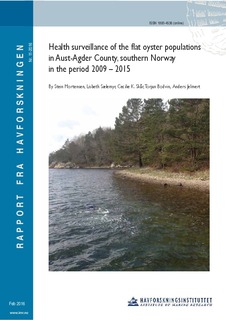| dc.description.abstract | Norwegian populations of European flat oysters, Ostrea edulis, have been considered free
from notifiable diseases. In 2006, microcells resembling the oyster parasite Bonamia sp. were
observed during histopathological examination of tissue specimens of flat oysters, Ostrea
edulis from the Arendal area, southern Norway. In 2008, the EU reference laboratory received
samples from the Norwegian Veterinary Institute, and reported one Bonamia sp. in a
haemocyte from one oyster. By real-time PCR, positive results were obtained from two
oysters in one triplicate sample. Sequencing of the PCR products gave 100% identity with B.
ostreae. After this diagnose, both the Norwegian Veterinary Institute and The Institute of
Marine Research have monitored the population. The observed microcells have been observed
since the sampling at the site was initiated, always at a low prevalence and intensity. No
inflammation, pathology or reductions of the oyster's condition have been associated with the
observation. The population appears healthy, with a normal reproductive cycle pattern.
Several cohorts have been present throughout the study period. Since 2009, more than 2 200
oysters have been examined by histology, and samples from 581 of the oysters have been
analyzed by PCR, all with negative results. The situation has thus been stable since 2006. A
10 years long sub-clinical Bonamia infection seems unlikely. If the diagnosis from 2009 is
correct, Bonamia must be present at a very low prevalence, escaping PCR detection due to the
sample sizes in the present study and living in co-existence with the oysters, thus not killing
its host. One possible explanation is that the observed cells are not closely related to Bonamia
ostreae, but another organism not detected by the assays used. We will perform a new
extraction of DNA from haemocytes during spring and summer 2016, when the microcells are
presumably present. As the situation has been unchanged for 10 years, there is no need to
sample 150 oysters every six months. The sample size may be reduced to 60. We recommend
however restrictions on the movement of bivalve into, and out of, this area, until results from
the sampling in spring 2016 has been analyzed and reported. | nb_NO |
